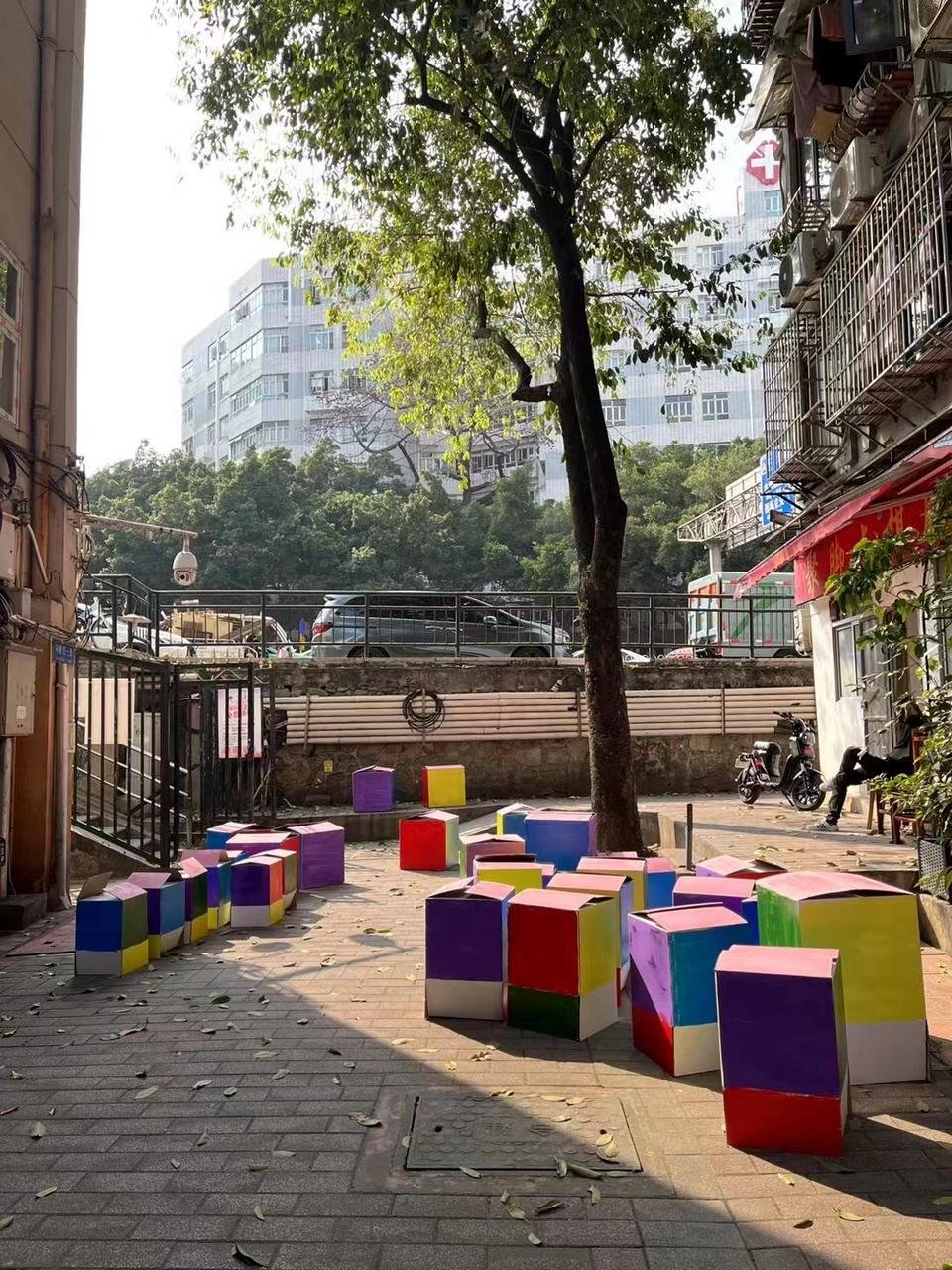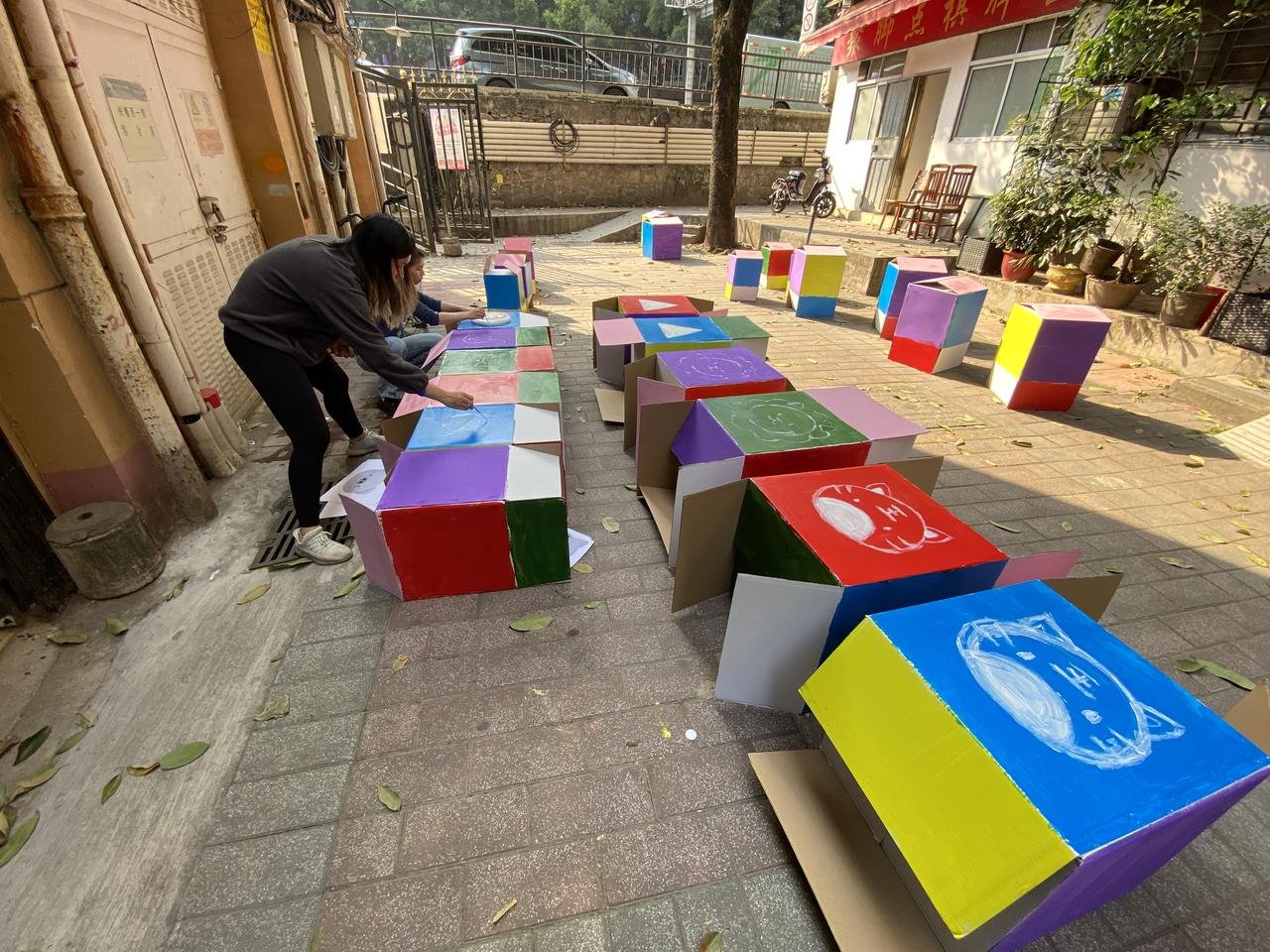An invitation to toy with playing - designing a participatory pop-up playground for immigrant communities
Last month, my team was invited to design tools to encourage community play experience for low-income immigrant/migrant communities in Hangzhou (modern capital of Zhejiang Province and home of Alibaba).
There were multiple agenda’s behind this endeavor. Our client, a local Charity, is keen on using community events to build social capital among the residents, particularly between parents of young children. Secondly, from an education disparity perspective, these family lack the means to send their children to paid services to learn and to build social-emotional skills. Let’s not forget, children 3-6 of age in cities like these had missed 3 important socialization years with others during COVID.
We decided, we need to embody this “play experience” with a system of tools, or toys.
And After a bunch of systematic research, first and second hand, we honed in on the following design principles:
Large in size and scale (to enable group play, and to transform public space)
Low-structure, in both tool and play activity design (see below)
Enable free playing
open to emergent ways of playing
Low cost (including running the activities in the long run)
Responsible: safe, environmentally friendly etc.
What are low-structure play tools and low-structure play activities? The former refers to tools that are deconstructed into basic elements that allow non-specific ways of utilization. And the latter refers to play activities that are not highly organized, instead are loose and open (such as playing in the sandbox). It is believed that having access to low-structure playing is vital for children to develop creativity, social-emotional and other skills. This is also the a philosophy behind Anji Play from China and PARS Playwork Practice from the UK.
But low-structure isn’t no-structure. We still had to come up with real prototypes to land in these communities.
I really thought about the low-structure thing, and thought, what is the thing with the lowest structure, yet provides unlimited space for adding content that we could get at a reasonable cost? And I came up wth this sketch on my iPad.
Cardboard boxes that can be moved and stacked, painted with colors, numbers, symbols etc to provide layers of “information” to encourage different ways of play.
The team was pretty happy with this scaffold for further design. One it’s extremely doable within our time constraint, and secondly, it opens unlimited imagination for iteration.
So with the help of teammates, some bought and some borrowed, we handmade the prototype right in the community space where our Guangzhou office resides.
A mix between Mondrian and Rothko in 3D?
In terms of playing activities, we thought this where we should leave some blank spaces for the community (social workers, parents, bigger kids) to make-up their own. However, for prototype testing, we came up with 3 levels of “structuredness”.
free play
loosely organized, simple games: eg. multi-color house building challenge
highly organized group games: eg. math games
Sketch by Kaixin Li, demonstrating different organized games.
And during an sunny weekend in Hangzhou, we brought our prototype into two nearby communities. In either community, we set up the prompts for 3 hours in a outdoor public spaces (one of them is known as the place for COVID testing). And allow the children play freely, while intermitting with 15 minutes organized activities.
There are some interesting observations from the field.
Children can really engage with free play. Let them have it!
Making large scale playing prompts encourage social interactions, both among the players and between the community members who are already engage in playing and the passerbys
Parents of young children naturally participate in play, and this extends to helping with organizational work
Overall, I was really encouraged by how everything turned out, particularly by how much these colorful boxes transformed community space and put small children at its center stage.
Our client’s project team was working with us every step along the way, and they were also encouraged by how simple and replicable this pop-up play ground concept is. Now the challenge that the client team has to face is designing something less visible, a operational system that delivers these types of activities to the communities on a regular basis.
Final reflection
When we had our flections as a design team, we talked at length about the key moments during the design process that made the design outcome the way it is.
And there were two important moments:
the iPad sketch that solidified a scenario of the interaction between the children and the play prompts.
The second was our decision to not design the playing activities, but have them user-generated (the best games can be shared among communities).
These two moments demonstrate two roles of the strategic designer, designing scaffold and designing blank space. To me, these are both invitations for others to participate in design.
_____This project was a commissioned and Kaixin Li, Kaixuan Liao and Yue Gu contributed to the research, prototyping and field testing.







